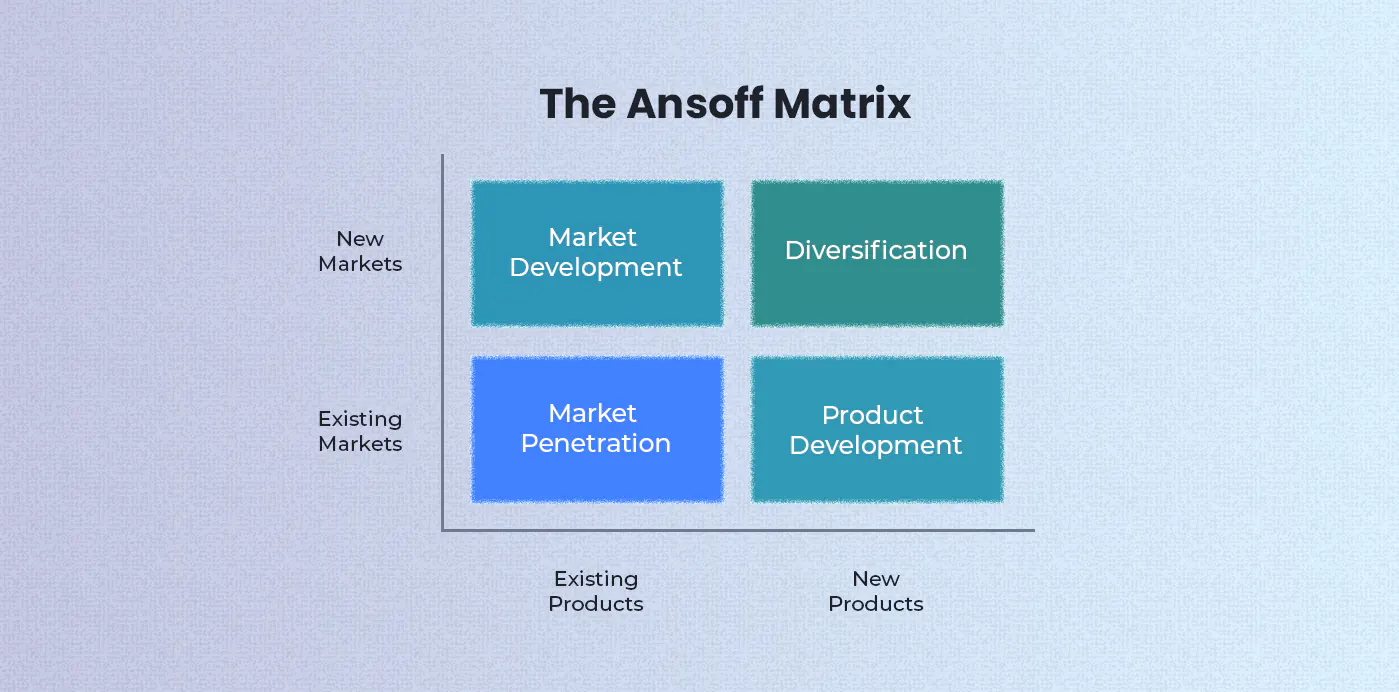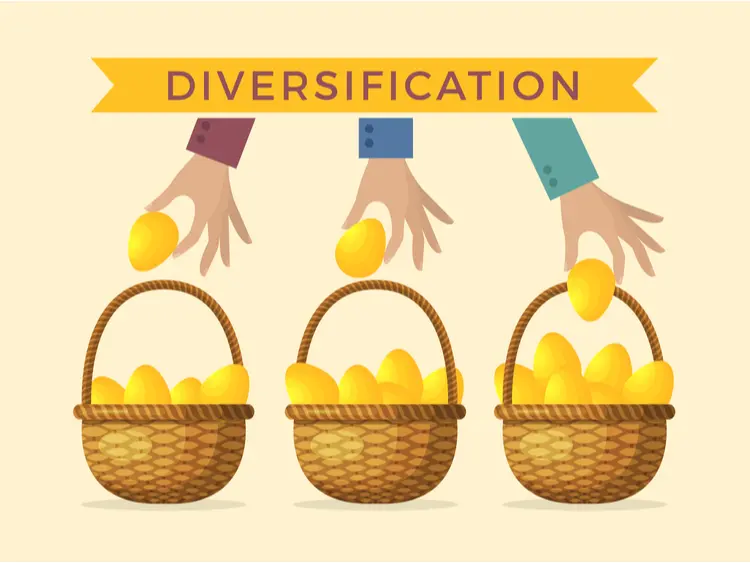Market Growth Opportunities To Expand & Grow Your Business
Technology has helped to forge a global economy, where businesses can reach customers in the furthest reaches of the planet. This economy is worth a mammoth 85 trillion US dollars, which you can access by tapping into new markets and driving your growth skyward. In this article, we assess the most profitable market growth opportunities available to your business, so you have a good overview of which to capitalize on, which to avoid, and how to push your company to greater heights.
The role of customer segmentation in market growth opportunities
Before we jump in, we need to cover a critical precursor to tackling market growth opportunities: customer segmentation.
Let’s say you have 1,000 customers on your books. Each one is an individual with their own personality, wants, and needs, which is expressed in their purchasing decisions. When you’re searching for new growth opportunities in marketing, and you consider your current customers as a single homogenous group, patterns may be clouded and you can become blinkered into trying to find more of your favourite customers. There’s just too many variables, and no clear direction to take, which prevents you from seeing the real opportunities (check out our Mission Vision Values article for help with this).
This is where customer segmentation (also known as market segmentation) comes in. It’s the process of dividing prospects and customers into groups based on common characteristics, which allows you to consider each segment individually, and better identify your customers’ needs . By segmenting people (or businesses for B2B) based on useful characteristics such as their demographics, industry, location, challenges, and needs, and consistently strengthening your knowledge of these segments with customer surveys, feedback, focus groups, and other methods, you’ll have a vivid understanding of their reasons for buying. It’s also important to consider potential customer segments that aren’t represented in your customer base, to discover future potential.
Your market growth potential is correlated to the strength of your customer segments. They’re the foundation on which market growth is built, with the power to reveal new product developments, new markets to enter, new segments to sell to, and how to expand your current market share. They also tell you how to improve your current products and level of service to your customers.
Once you’ve invested in customer segmentation and are getting valuable insights from it, you can start to consider the market growth opportunities outlined below.
The Ansoff Matrix
These market growth opportunities are based on Igor Ansoff’s “Ansoff Matrix”—a visual technique that illustrates common opportunities and risks (find out more about this technique in the reference links3).

The lowest risk is market penetration, at the bottom left of the matrix. Whenever you move into another quadrant, risk increases. We’ll start with the lowest risk strategy first, and build our way up.
Market penetration
Market penetration is when a business captures market share for a type of product or service that already exists. Laptops are an example of this—they are an established product with a thriving market, so market penetration would be selling your own laptop and stealing market share from people already selling them.
Market penetration is the strategy with the lowest amount of risk, because the products offered by competitors are already proven sellers.
Here are some of the most effective market penetration tactics.
Marketing channels
Contemporary marketing channels such as social media, email, and digital adverts can help to carve out an entirely new space for you in your existing market, and also bolster your brand awareness.
It can be easy to dismiss certain channels due to personal experience (maybe you never open marketing emails), but your customers may respond positively to them, and turn them into a good source of income. The only way to truly know whether a marketing channel works for you is to give it a go. Experimenting with every channel available is a low risk strategy that can prevent you from leaving money on the table. And if you’re already marketing in every major channel, don’t underestimate your ability to do better—extra time and investment can help to expose some truly sweet opportunities.
Here’s an overview of the most common digital marketing channels, and what they’re good for.
-
- Social media—social is ideal for engaging with customers, developing a brand voice, and getting your brand in front of more people. This opens up plenty of market growth opportunities.
- Email—email is a great way to nurture leads with good content, and similarly to social media, making people more aware of your brand.
- Adverts—Google and social media advertising are absurdly popular, and have become multi-billion dollar advertising platforms as a result. Well-designed and properly-analysed adverts can be a cost-effective way to grow.
- Content marketing—writing informative, popular content for your target audience can do wonders for your SEO and brand credibility.
- SEO—while not technically a channel, SEO creates a wealth of opportunities simply because it makes your business more visible.
Digital marketplaces
The Digital Revolution created many more ways to sell, and successful businesses have grabbed the binary bull by the horns. This is most apparent in the number of digital marketplaces that have sprung up, with eBay and Amazon leading the charge.
Here are some channels with the best potential for market growth:
- Online marketplaces—these websites have millions of monthly visitors, and offer immense potential for selling products online.
-
-
- eBay
- Amazon
- Catch.com.au
- MyDeal
- Kogan
- TradeMe
- FishPong
-
- Social media marketplaces—Facebook Marketplace and Instagram Shopping allow you to sell products directly on the app. And for service-based B2B companies, LinkedIn is the ideal place to rustle up some new business.
Improve your product
Even the simplest of products can be improved. This is illustrated beautifully in the 2011 documentary Jiro Dreams of Sushi, which tells the story of dedicated masterchef Jiro Ono, and his unending quest to perfect his sushi. This is a food that consists of just two main ingredients—rice and fish—but despite its simplicity, Jiro has been able to hone his technique to such a degree that he charges $300AUD per meal.4
There’s always something that can be improved with your product or service. Regular market research and customer feedback will help you to identify the improvements that can be made, which will help you to attract more customers from your targeted segments, and give you a bigger share of the proverbial pie. If you’d like to learn more about creating effective surveys, check out our article on the best customer feedback questions to ask.
Cross-sell
Cross-selling is selling additional products to your customer, while they’re purchasing something else. It’s effective when the cross-sell products are related to the item—for example a bicycle might have a helmet, tyre pump, and spare inner tubes as cross-sells. On an ecommerce website, these should be easy to add from the bike’s product page.
For a service-based business, a cross-sell would be anything that adds extra value to the customer’s purchase. For example, a boat repair business might offer a fuel stabilizing additive to a newly-repaired engine in good condition.
Use dynamic pricing
Dynamic pricing is the process of regularly adjusting your pricing based on demand, competition, and other factors. It’s an attempt to find the highest possible price that customers are willing to pay, which is essentially what most businesses are trying to do. But it’s considered unethical by some, and can damage your brand’s reputation if you’re not transparent about it—so be cautious!
Software such as Unleashed and PriceEdge can automatically update your products’ pricing based on various factors, so are worth looking into if you run an ecommerce business. They can work well for service businesses too—Uber’s surge pricing is a prime example, which uses the simple rule of supply and demand to charge more during peak hours.
Product development as a market growth opportunity

The next quadrant of Ansoff’s matrix is product development. Product development is selling a new product to your existing market. A simple example is a coffee vender who starts to sell healthy breakfast slices. She has a regular base of customers who love her coffee, and after chatting with a few of them, she’s discovered that many of them skip breakfast because they’re too rushed. Selling slices is a good way to fill her current customers’ needs (and their bellies).
Creating a new product or service can be a lucrative way to grow your business, but also risky. You must confidently identify your customers’ needs through segmentation, and spend time researching, conceptualising, designing, prototyping, manufacturing, testing, and launching your product.1 This can be time-consuming and expensive, so it’s vital that you don’t skimp on the research phase, which will allow you to validate your product and ensure that it’s something people want. Having said that, if you really know your customer segments and you discover a need that isn’t being met, and this need fits your areas of expertise—go for it. If the investment needed to develop the product isn’t too significant for you, then test, test, test! You could just find a winning formula for growth where you least expect it.
Market development in Ansoff’s Matrix
Market development is a strategy that identifies new markets for existing products. This could be an adjacent market that is similar to the company’s current industry, or an entirely different market.
For our coffee vendor, a market development strategy could be trying to package and sell her breakfast slices to a local nutritionist, who wants to promote healthy-eating to their clients. Before taking the plunge, the coffee vendor must research this new and unfamiliar market to ensure there’s a genuine need for her slices, and which packaging, pricing, and marketing techniques would give her the highest return on her investment. Because she’s trying to target non-buying customers in a completely different market, there’s a medium level of risk involved.
Opening up a business in a new location is another form of market development that can grow your market share. In theory, the further away your business is from your existing location, the bigger the challenge and risk. Opening another business down the street is a lot less complicated than opening a business in another country, where there’s an entirely different set of rules and regulations, and a lot of distance to deal with. Ultimately, you’ll need to determine if the business can be successfully replicated in the new spot, whether the market is similar enough, and whether you have the funds and cash flow to complete the move. Opening a new branch or shop is a big deal—make sure you have a detailed strategy to mitigate the risk.
Market development has two main challenges:
- Which new market to sell in—a lot of market research needs to be completed to strengthen your customer segmentation, and determine the most profitable market to expand to.
- Finding a new use for your product—if you’re selling to a new market, you’ll probably need to promote your product in a different way. Given our coffee vendor’s familiarity with her customers, her slices could be promoted/branded as “breakfast savers” at her coffee shop, and “nutrient boosters” when sold by the nutritionist. Whatever the re-branding, the product must speak to the needs of each individual market.
Diversification

Diversification is either selling a new product, selling in a new market, or taking over a part of the supply chain. Naturally, this comes with a lot of unfamiliarity, which makes it the riskiest strategy of the four.
To be profitable, a diversification strategy requires a ton of research and planning. This includes detailed market research, exceptional customer segmentation, a clear product development strategy, as well as a solid understanding of sales, marketing, and supply chain operations.
You’ll likely need a large amount of capital to invest, and be comfortable with taking on a lot of risk. This includes diverting funds from your core business, diluting your core products, and stretching your resources too wide. But if you pull off the strategy, you could see a large increase in sales and revenue, a share in a new market, and potentially higher margins for your products. As with every other business strategy, if you invest heavily in research, you have a much better chance of being successful.
Growth opportunities in marketing—summary
In our global economy, there’s a lot of money to be made, and Ansoff’s Matrix describes some profitable growth opportunities in marketing. You can aim for market penetration, finding new ways to grow your existing market share. You can go for product development and capitalise on your current market with a brand new offering, or take your existing products to a new area with market development. Or you can take the toughest road of all: diversification, selling an entirely new product in an entirely new market.
Every approach has its risks and rewards. But as long as your customer segments are solid, and continually reinforced by customer feedback and research, you’ll have the tools you need to take every market growth opportunity that comes your way.
References
- Mary-Rose Sutton, 2021, The 7-Step Product Development Process [Explainer] (2021), Shopify
- • Global GDP 2014-2024, Statista
- The Ansoff Matrix, MindTools
- Jiro Dreams of Sushi, Netflix


